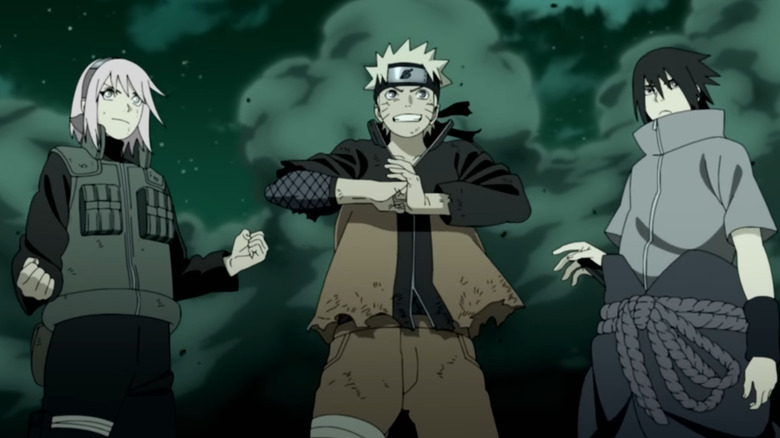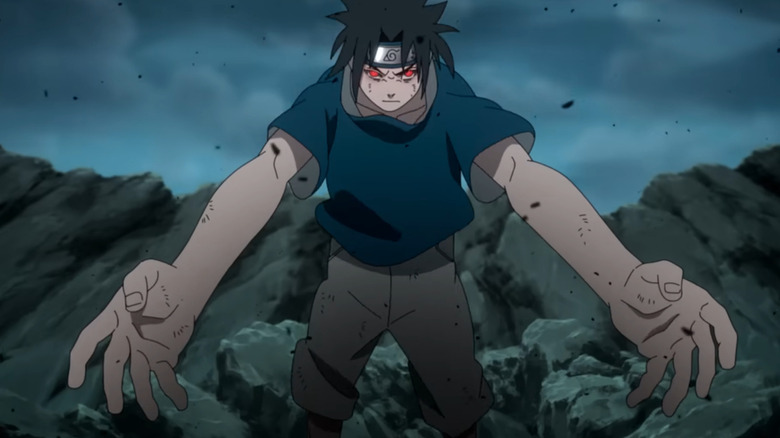Naruto's Masashi Kishimoto On The Difficulty Of Ending The Show's 15-Year Run
Out of "Shonen Jump's" legendary big three, "One Piece" might still hold the top title as the longest-running anime series at a collective 24 years and still counting. But its rival series, "Naruto," still had an impressive run of its own. From the show's debut in 2002 to its conclusion with "Shippuden," the anime experienced a 15-year lifespan. With some anime that often gets canceled after one or two seasons, 15 years for a show these days is increasingly becoming a rarity. And it's not like the world of "Naruto" doesn't continue to present more stories, as "Boruto: Naruto Next Generations" is figuratively and literally taking the torch and ninja running from where the original series left off.
Granted, "Naruto" significantly bolstered its time with skippable and, at times, baffling filler episodes. But even anime content pulled straight from the manga had plenty of stories to cover, especially as things ramped up toward the conclusion. By the end of the series, the entire shinobi world was embroiled in a war and dealing with a resurrected Madara Uchiha. We also finally got the much-anticipated Team 7 reunion and a final clash between Naruto and Sasuke. Kishimoto eventually had all the pieces set to deliver the epic conclusion the series had always promised. But as the mangaka once noted to Anime News Network, getting there wasn't without its share of hurdles.
Masashi Kishimoto struggled with getting to the series' conclusion
Despite Sasuke's fall into villainy, and all of the crimes he's committed, at the end of the series, Naruto still forgives his old friend. Ever since Sasuke left Konoha, it was Naruto's supreme mission to retrieve his comrade from the grasp of darkness. And he ultimately does at the end of the series, though it costs the two some limbs. But as Kishimoto noted in a 2015 Anime News Network interview, getting to that point, naturally, was quite the hurdle. "It was a slightly bumpy road, mainly because I wanted one of the themes of the end to be Naruto forgiving Sasuke," Kishimoto said in the interview. "I wanted to make sure the intervening story led naturally to that in a realistic way to make it plausible. Because if one minute they're fighting and then 'Oh, I forgive you!' would be weird."
Kishimoto further noted in the interview that the "Pain Arc" served as one of those bumps in the road to keep the original theme intact for the ending. But at the same time, without Pain, it's questionable if Naruto would have been able to forgive Sasuke. The arc also helped Kishimoto to continue his mission of bucking a specific Shonen trend.
According to a fan-translated Kana interview, Kishimoto didn't want "Naruto" to be similar to other series having an evil person beyond any reasoning. So, as a result, the mangaka strived to produce villains with complex backstories and, sometimes, justified reasons for their actions. Pain exists only because of the world's continuing cycle of war and hatred. With antagonists written like that, it certainly presents the ninja system as the real culprits at fault in the world of "Naruto."

